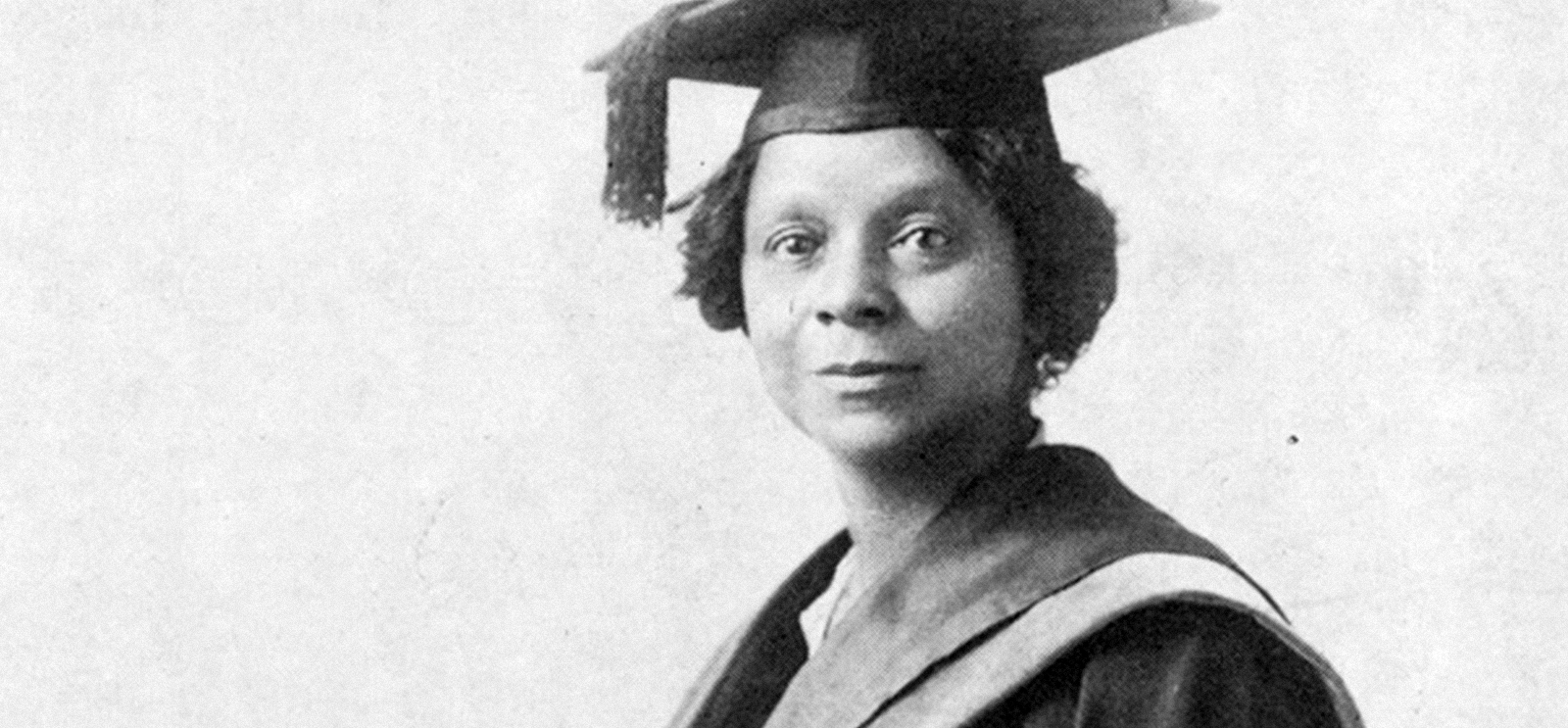
Simpson earned her PhD at age 55. (©Moorland-Spingarn Research Center of Howard University)
Students work to honor monumental women on campus.
There isn’t much to remind anyone that Georgiana Simpson was here—just a few documents in the Special Collections Research Center, her biography and photo on a University website. A slim hardcover copy of her master’s thesis, a study of an 11th-century German poem, is tucked away in the stacks of Mansueto Library.
But almost a century ago, Simpson, AB 1911, AM 1920, PhD 1921, made history as the first African American woman at UChicago—and one of the first in the nation—to earn a doctorate. And soon her likeness will be a daily sight for students walking through the Reynolds Club.
Born in Washington, DC, in 1866, Simpson began teaching in a local elementary school at 19. In 1896, encouraged by a former teacher of her own, Simpson spent 18 months in Germany studying the language and literature. When she returned to Washington, she put her skills to use as a German teacher at what became Dunbar High School.
Simpson enrolled at UChicago in 1907 and lived in Green Hall until several white residents complained. Dean of women Marion Talbot and Sophonisba Breckinridge, PhM 1897, PhD 1901, JD 1904, head of the residence hall, had made an executive decision to allow Simpson to live in Green, but when University president Harry Pratt Judson got back from summer vacation, he reversed the decision, saying she had to move off campus.
Despite this painful experience, Simpson came back to the University to begin her graduate work in 1917. After earning a PhD—her doctoral dissertation focused on the work of Johann Gottfried von Herder, considered a forerunner of German romanticism—Simpson continued her teaching career at Dunbar and edited and annotated a French biography of Haitian revolutionary Toussaint Louverture. She was offered a faculty position at Howard University in 1931 and spent the remainder of her career there.
In an effort to make sure Simpson’s accomplishments are not forgotten, rising fourth-years Asya Akca and Shae Omonijo have raised about $30,000 for a bronze bust of the pioneering scholar, to be unveiled in the Reynolds Club this fall.
The pair came to the project from different angles. During high school in Louisville, Kentucky, Akca grew interested in creating monuments to honor notable local women. When she arrived in Hyde Park and joined Student Government, she saw an opportunity to continue that work in her new home. After attending a talk at the Regenstein Library about UChicago’s women founders, she set her sights on a sculpture of Talbot.
Meanwhile, just for fun, Omonijo had been spending time in Special Collections trying to determine which College house Bernie Sanders, AB’64, had lived in (she never found the answer). Her study of campus housing led her to Simpson’s story.
“We were talking in the C-Shop one day,” Omonijo says, “and I said, ‘There was this one dean who kept trying to keep Dr. Simpson on campus, but I don’t know her name.’ And Asya said, ‘Dean Talbot?’”
Thus was born the Monumental Women Project, dedicated to creating public monuments of UChicago’s female trailblazers, starting with Simpson and Talbot.
The students had no idea how to commission a public sculpture—Omonijo says she’d never even taken an art class—so they sought advice from staff at the Logan Center and the Smart Museum.
They soon discovered that, even with a $9,500 grant from Student Government’s Uncommon Fund, which supports student projects on campus, raising enough money to honor both Simpson and Talbot would be a daunting task. They decided to focus on Simpson first and hired local sculptor Preston Jackson, who has done commissioned work around the Midwest. UChicago Crowdfunding helped them raise money on top of the Uncommon Fund grant. The provost’s office, UChicago Arts Student Creativity Grants, and the Reynolds Club Endowment Fund kicked in too.
The students called on sources around the world as they researched a plaque to accompany the bust of Simpson. When they met with the former national historian of Simpson’s sorority, Alpha Kappa Alpha—located a few blocks from campus—they ended up with another donation to the project. The two also spoke to associate professor of American history Adam Green, AB’85, to learn about the experience of African American women in Chicago during Simpson’s era.
The women worked with Facilities Services to find an appropriate location on campus. They note with delight that when unveiled, Simpson’s bust, in the corridor leading to Mandel Hall, will face a bronze plaque of Judson—making him a neighbor of the woman he forced out of campus housing.
Both Akca and Omonijo are political science majors. Akca, who has a concentration in international relations, wants to work in foreign policy. Omonijo, a human rights minor, plans on a JD/PhD and an academic career.
Simpson’s story, Omonijo says, was a vivid reminder that “too many black people have sacrificed so much” to give other students of color the opportunity to pursue graduate education.
In keeping alive Simpson’s legacy, Akca and Omonijo are helping create their own, Omonijo says. “It’s important to leave something behind, to say: this is what women can accomplish when their stories aren’t hidden.”
